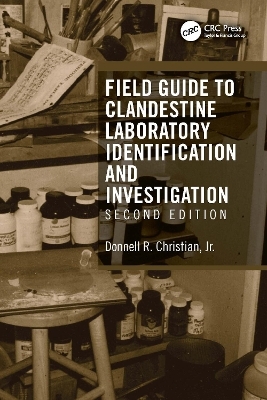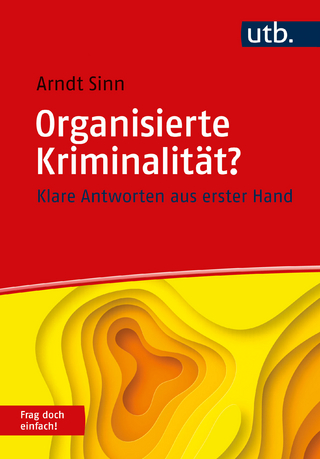
Field Guide to Clandestine Laboratory Identification and Investigation
CRC Press (Verlag)
978-1-032-37029-3 (ISBN)
Clandestine labs that manufacture drugs or explosives may be encountered virtually anywhere. They can range from complex operations employing scientific equipment and exotic chemicals or simply kitchen utensils and chemicals purchased at a local grocery or hardware store. Regardless of their form, the key to detecting clandestine labs is the ability to recognize the combinations of equipment and chemicals that constitute the lab in the first place. The first line of defense against the manufacturers—who supply the drug trade and terrorists with their tools of destruction—is law enforcement, the fire services, and other emergency responders.
Field Guide to Clandestine Laboratory Identification and Investigation, Second Edition provides the information necessary to recognize operations that produce these deadly brews. As with the prior edition, the book has sections covering the chemicals and equipment commonly used in the manufacture of drugs and explosives. They are grouped in a manner that allows the emergency responder to quickly identify common combinations of equipment and chemicals that could potentially be used to manufacture drugs or explosives. Since many clandestine manufacturing operations use commonly available materials that have legitimate uses, the author outlines how to quickly assess and recognize key indicators associated with clandestine laboratory operations.
Sections within the book address information concerning both the hazards associated with those chemicals involved and the personal protective equipment needed to abate the hazards. In addition, documentation requirements, field-testing, and sampling procedures are detailed for use once the operation has been seized and secured. Reproducible worksheets are provided to be used either as, or to supplement, the on-scene investigators’ field notes and assist in providing a standardized manner to objectively record information about the crime scene.
The ability to identify the tools used to manufacture contraband drugs and explosives is a key element in the battle against drug abuse and terrorism, making the Field Guide to Clandestine Laboratory Identification and Investigation, Second Edition an indispensible resource for responders and investigators alike.
Donnell R. Christian, Jr. has over 30 years of forensic experience, split between two areas of expertise. He spent 15 years with the Arizona DPS specializing in the clandestine manufacture of drugs and explosives. He is currently an explosives chemist for the Forensic Exploitation Directorate of the Defense Forensic Science Center. In between these engagements he assisted in establishing forensic science programs in the developing democracies as the Director of International Training for Professional Business Solutions (PBSI) and as the Forensic Science Development Coordinator for the U.S. DOJ’s International Criminal Investigative Training Assistance Program (ICITAP). With ICITAP, he has assisted in establishing forensic science programs in the developing democracies of Armenia, Azerbaijan, Bulgaria, Georgia, Kazakhstan, Kyrgyzstan, Senegal, Turkmenistan and Uzbekistan as well as the post conflict countries of Bosnia, Haiti, Kosovo and Iraq. During his tenure with PBSI he provided the technical assistance to the forensic programs in Armenia, Georgia and Moldova which lead to their acquisition of ISO 17025 accreditation through their national accreditation body. Mr. Christian has utilized his experience with the as the basis for three books and numerous articles to include: Forensic Investigation of Clandestine Laboratories (CRC Press 2003), Field Guide to Clandestine Laboratory Identification and Investigation (CRC Press 2004) and Clandestine Lab Investigation Pocket Guide (PBSI 2006) as well as chapters in Forensic Science, An Introduction to Forensic Investigative Techniques (CRC Press 2003, 2005, 2009, 2014) and The Forensic Science Handbook (2006, 2011). Donnell has a Bachelor of Science degree in Chemistry and Police Administration from Northern Arizona University and a Masters’ Degree in Criminal Justice from AMU.
1. Definitions 2. Equipment 3. Chemical Tables 4. Hazard Identification 5. Site Control 6. Scene Processing 7. Worksheet Guides App A. Emergency Hotlines
| Erscheinungsdatum | 10.07.2023 |
|---|---|
| Zusatzinfo | 3 Line drawings, color; 4 Line drawings, black and white; 50 Halftones, color; 41 Halftones, black and white; 53 Illustrations, color; 45 Illustrations, black and white |
| Verlagsort | London |
| Sprache | englisch |
| Maße | 156 x 234 mm |
| Gewicht | 226 g |
| Themenwelt | Naturwissenschaften ► Biologie |
| Naturwissenschaften ► Chemie | |
| Recht / Steuern ► Strafrecht ► Kriminologie | |
| Sozialwissenschaften ► Soziologie | |
| ISBN-10 | 1-032-37029-7 / 1032370297 |
| ISBN-13 | 978-1-032-37029-3 / 9781032370293 |
| Zustand | Neuware |
| Haben Sie eine Frage zum Produkt? |
aus dem Bereich


